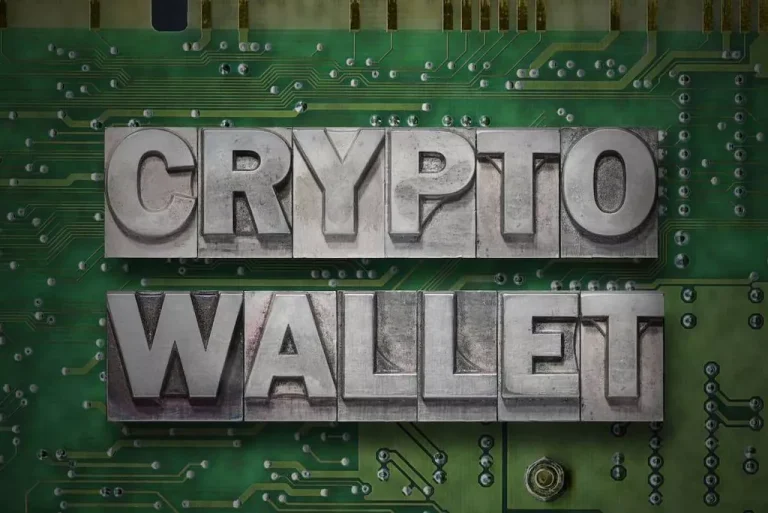This often entails the community deducting some of their safety deposit (their initial staked coins). Bitcoin’s creation introduced the world to the immense advantages internet-based communities could unlock by way of a distributed ledger. However, its limitations with scalability and infrastructure steadily got here to mild as rising numbers of customers adopted the network. Transactions have been gradual and expensive throughout peak demands, while concerns around its environmental influence emerged as specialised computers worldwide started focusing their energy on mining actions. A validator is an actor on Ethereum 2.0 who proposes and attests new blocks on the community. In Proof of Stake, a validator stakes 32 ETH to have the ability to take part in sustaining the community.
The term “downtime” refers back to the time period during which a validator is offline and unable to supply new blocks. This could be due to network delays, software program issues, or hardware problems. Under Proof of Stake (PoS), Ethereum makes use of “checkpoint” blocks to manage validator votes. The first block of every epoch (a interval of 32 slots where the validators suggest and attest for blocks and is of 6.four minutes) is a checkpoint.
So if a consumer doesn’t need to run their node, they will delegate their ADA directly to a stake pool without losing custody. The primary precept behind the PoS model is that individuals with the best stake within the system have a pure incentive to behave honestly and preserve the community. Any attempt at dishonesty might result in substantial losses in the worth of their staked assets. Phase 1.5 is a term being used to explain a interval in the course of the Phase 1 improve where the Ethereum 1.zero and Ethereum 2.zero blockchains are merged. After Phase 1.5, the Ethereum 1.0 chain will run as a shard of the Ethereum 2.0 PoS blockchain. This would be the second when the full functionality of the Ethereum 1.0 chain – together with using ETH – will turn into functional on Ethereum 2.zero with out risking a break in information consistency.
Proof-of-work Vs Proof-of-stake: Why Did Ethereum Swap To Proof-of-stake?
However, most PoS methods have extra security features in place that add to the inherent security behind blockchains and PoS mechanisms. Even after a transaction is confirmed as a half of the latest block, it doesn’t imply it can’t be changed or undone. For a brief interval that follows, a transaction could also be susceptible to assaults from dangerous actors who try to exploit weak factors within the blockchain. Proof-of-stake has recently shared a bulk of the highlight as Ethereum transitioned from proof-of-work (PoW) to PoS in September 2022.
Generally speaking, consensus is a process used to succeed in an settlement is ethereum proof of stake among a group of individuals.

Susceptibility to assaults decreases the general security of the blockchain. Proof of stake opens the door to extra individuals collaborating in blockchain techniques as validators. There’s no need to buy costly computing methods and eat huge quantities of electrical energy to stake crypto. The Proof of Work (PoW) consensus mechanism is at present essentially the most widely-used consensus mechanism and arguably the best understood.
Once a committee has been assigned to a selected block, just one random individual from the group of 128 members is chosen as the one to propose the block. The remaining 127 validators vote on the proposal and confirm the transactions. If a majority of the group members agree, the block is added to the chain. Ethereum needs to move to proof of stake so it doesn’t additional exacerbate the environmental horrors of Bitcoin. The query is, will its new system fulfill all the guarantees made for proof of stake? If a public blockchain isn’t decentralized, what is the level of proof of anything?
Bribery Attack
For instance, Ethereum’s transition from PoW to PoS decreased the blockchain’s power consumption by 99.84%. Proof-of-stake is a cryptocurrency consensus mechanism for processing transactions and creating new blocks in a blockchain. A consensus mechanism is a technique for validating entries into a distributed database and keeping the database safe. In the case of cryptocurrency, the database is called a blockchain—so the consensus mechanism secures the blockchain. It is liable for participating within the consensus-building process of a Proof of Stake blockchain.
- Validators who hold large amounts of a blockchain’s token or cryptocurrency may have an outsized quantity of affect on a proof of stake system.
- Proof of stake does away with miners and replaces them with “validators.” Instead of investing in energy-intensive computer farms, you spend cash on the native cash of the system.
- The requirement to stake ETH incentivizes validators to act in the network’s finest pursuits.
- The software update to switch the consensus to Proof-of-Stake (PoS) occurred in August 2022.
- Yet above it all, Ethereum stays ahead of the game with a stalwart presence, persistently driving innovation and improvement.
Through a deterministic technique and the so-called ‘checkpoint’ blocks. They are liable for processing transactions on Ethereum whereas securing the whole community. Its creator wished to get rid of the control that third events, often massive banks or states, exerted over financial systems. Ethereum’s mechanism has different drawbacks—it’s tediously sluggish, averaging 15 transactions per second. CryptoKitties, a recreation the place gamers breed and commerce cartoon cats, caused a transaction pileup on the community in 2017.
Openai Teases An Amazing New Generative Video Mannequin Known As Sora
Ethereum now makes use of LMD Ghost as its consensus algorithm, which uses attestation weighting to decide which blocks to make use of in the chain. While PoS and PoW each have their own advantages, PoS is finest fitted to the needs of Ethereum. Ethereum’s transition to PoS has been a powerful success, positioning it as one of the energy-efficient and sustainable blockchain platforms on the earth.
Its native token, ether, is used to pay transaction fees while occurring to have market worth. If this query refers to market value, it is tough to say which is in a position to final or ultimately have essentially the most worth. Likewise, it is also tough to determine if the query is asked concerning which blockchain will garner probably the most use circumstances, developers, and end-users. Ethereum has a protracted and storied history, with many developments and incidents that had significant constructive changes and setbacks. ETH staking is a course of the place we deposit and block any quantity of Ether to validate blocks and safe a consensus layer. This new means is, in fact, Proof-of-Stake (PoS), which along with the adjustments talked about above, additionally reduces the power consumption of the Ethereum blockchain by 99.9%.
The consensus change itself also paves the way in which for additional updates to the blockchain, which can simultaneously allow cheaper transactions and enhance the scalability of the Ethereum blockchain. The winner appends the next block to the chain and claims new bitcoins in the form of the block reward. Certain implementations of proof of stake might depart blockchains more susceptible to different sorts of assaults than proof of work, corresponding to low-cost bribe assaults.

Something related occurred in 2016, after Ethereum builders rolled again the blockchain to erase a massive hack. Some group members were so upset they saved mining the unique chain, leading to two Ethereums—Ethereum Classic and what we now have at present. If it happens again, the success (and mining power) behind any competing version of Ethereum will depend upon the value of its coin within the open markets. Shard chains will allow for parallel processing, so the community can scale and assist many more customers than it at present does. Many see the inclusion of shard chains as the official completion of the Ethereum 2.0 improve, but it’s not scheduled to occur till 2023.
When a validator is down, they can’t participate in the consensus course of. Since that is detrimental to the overall functioning of the network, it’s penalized by the community by way of slashing. If an attacker wants to revert a finalized block, they might due to this fact should be prepared to lose at least one-third of all the ETH that’s been staked. Someone in the BitcoinTalk discussion board first launched proof-of-stake as a possible solution to the computing sources drawback. Sunny King, an nameless creator, and Scott Nadal later carried out it in their published whitepaper for Peercoin.
Nominated Pos (npos)
Having vital economic value locked in means validators must act truthfully or lose substantially if the ledger’s integrity is compromised. Network participants who can’t afford the prices of running a validator node could use numerous staking services to take part. For instance, Ethereum staking has a lock-up period, so if a user wanted to stake immediately, they would https://www.xcritical.com/ lose entry to their funds for a time. They can stake with liquid staking platforms such as Lido and Rocket Pool if they need entry to their funds earlier than the release date. These platforms are decentralized good contracts that stake ETH on users’ behalf and supply a staking by-product called stETH in return. Market forces can cause these derivatives to depeg from the value of ETH.

Ethereum’s move away from the Proof-of-Work (PoW) consensus has raised many questions about this subject in the cryptocurrency trade. Ethereum’s proof-of-stake system is already being examined on the Beacon Chain, launched on December 1, 2020. So far 9,500,000 ETH ($37 billion, in present value) has been staked there. The plan is to merge it with the primary Ethereum chain in the next few months. According to Amaury Sechet, founding father of eCash, proof of stake isn’t with out cons.
This decreased difficulty serves as an incentive for extra miners to return to the community, guaranteeing the network remains strong and sufficiently decentralized. Proof-of-Stake is a consensus mechanism the place cryptocurrency validators share the duty of validating transactions. Slashing is a disciplinary system utilized by PoS protocols to penalize validators for any dangerous or irresponsible behaviors.
